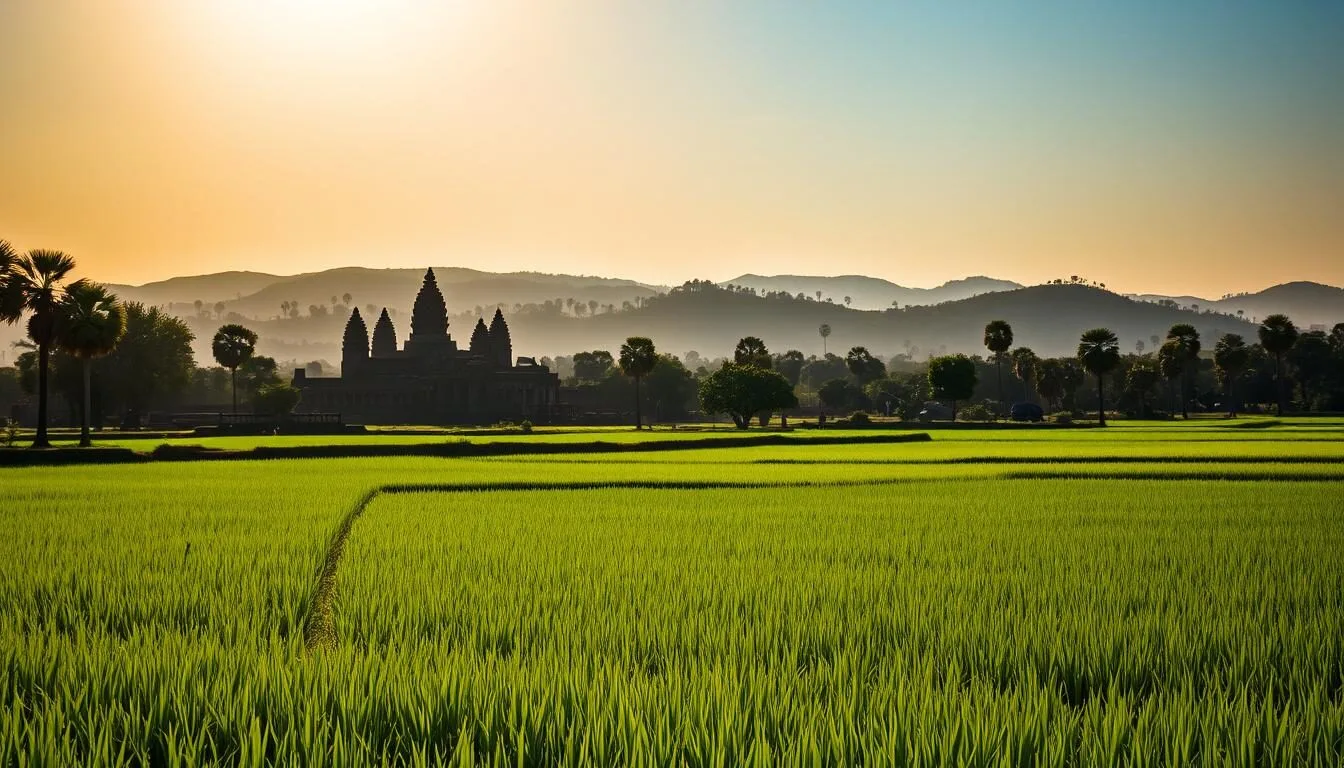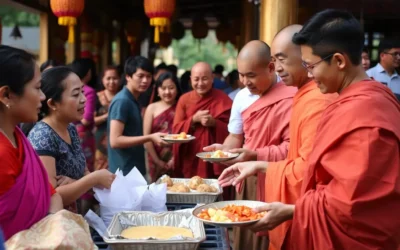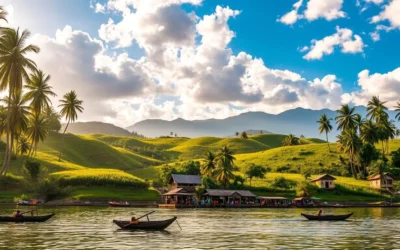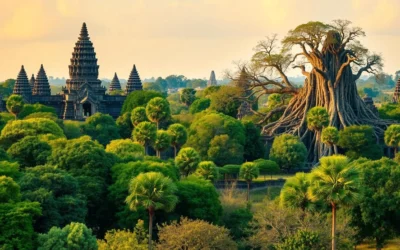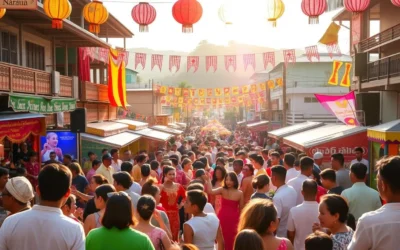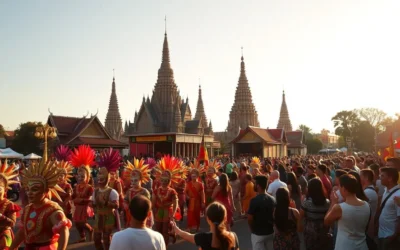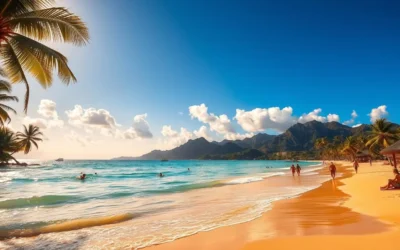✓ Accommodations✓ Flights✓ Rental Cars✓ Tours & Activities
Cambodia’s iconic Angkor Wat complex attracts millions of visitors each year, with the dry season being the peak tourist period. However, understanding the distinct seasons and their impact on your travel experience can make a significant difference.
The dry season, from late November to early April, offers clear skies and pleasant temperatures, making it ideal for exploring Angkor Wat. Yet, it’s also the busiest time, especially in December and January.
By understanding Cambodia’s climate and seasonal variations, you can make informed decisions about your trip, balancing factors like weather, crowds, and costs. This guide will help you navigate these considerations to plan a weather-savvy trip to Siem Reap.
Understanding Cambodia’s Climate Patterns
Cambodia’s climate is characterized by two distinct seasons that significantly impact the travel experience. Located in Southeast Asia, Cambodia has a tropical savanna climate, which is crucial to understand for travelers planning to visit Siem Reap.
Tropical Savanna Climate Overview
The tropical savanna climate in Cambodia is marked by high temperatures throughout the year, with significant rainfall during certain months. This climate type is characterized by a pronounced dry season and a wet season, influenced by monsoon winds.
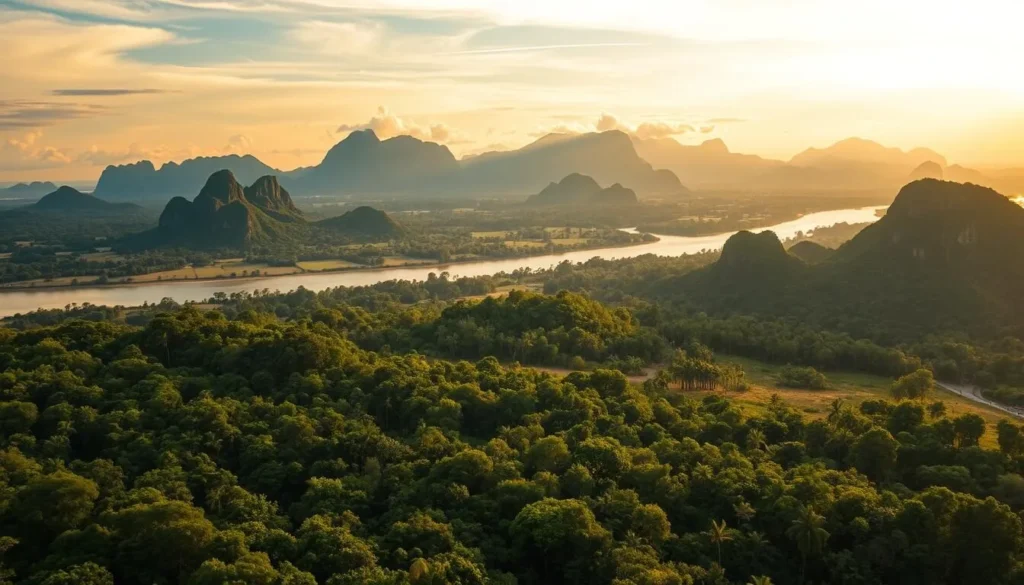
Wet vs. Dry Season: The Basics
The wet season in Cambodia runs from May to October, bringing heavy rainfall and high humidity, especially in August, September, and October. In contrast, the dry season, from November to April, is characterized by clear skies and minimal rain. Understanding these seasonal patterns helps travelers plan their activities and make the most of their trip.
During the wet season, the Southwest monsoon brings substantial rainfall, while the dry season is influenced by the dry northeast monsoon. This results in a significant difference in weather conditions between the two seasons, affecting tourism and outdoor activities.
The Dry Season: November to April
From November to April, Siem Reap is in the midst of its dry season, a time when the climate is most favorable for tourists. This period is characterized by minimal rainfall and comfortable temperatures, making it ideal for exploring the ancient temples and experiencing the local culture.
Weather Conditions and Temperature Ranges
During the dry season, Siem Reap enjoys relatively cool and dry weather, with temperatures gradually warming up as the season progresses. November and December are particularly pleasant, with average highs around 30°C (86°F). As we move into March and April, temperatures can soar, often reaching 35-40°C (95-104°F).
Peak Tourist Months: December to February
The months of December, January, and February are considered peak tourist season in Siem Reap. The weather is cool and dry, making it perfect for sightseeing. These months offer the best conditions for visiting the temples without the discomfort of high temperatures or the risk of rain. It’s the ideal time to explore Angkor Wat and other historical sites.
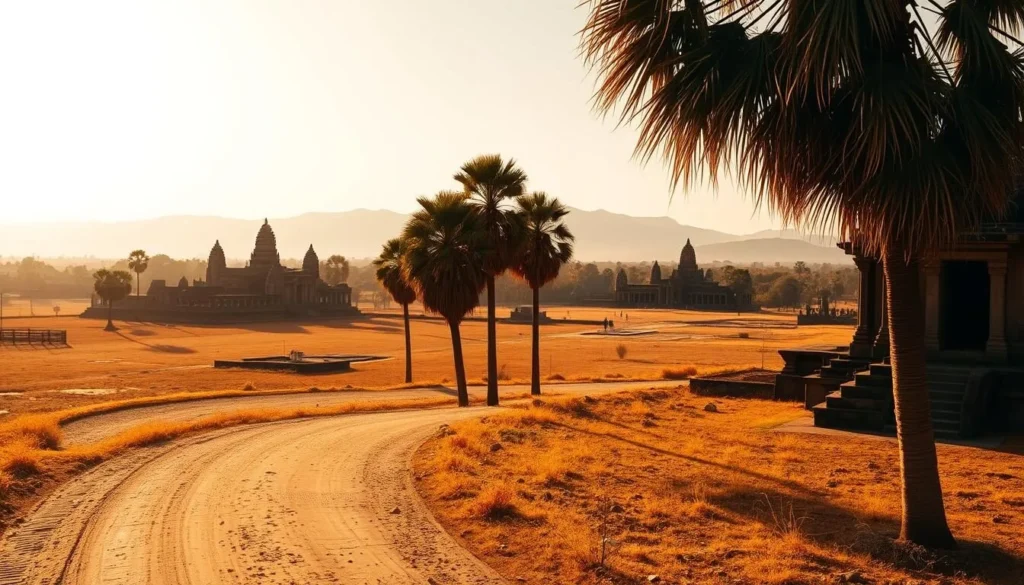
Late Dry Season: March to April
As the dry season progresses into March and April, the temperatures rise significantly, and the heat can become intense. However, this period coincides with the Khmer New Year celebrations in mid-April, offering a unique cultural experience. Visitors can enjoy the festivities while exploring the temples, albeit with the need to take breaks and stay hydrated in the heat.
To make the most of your visit during this time, consider starting your temple explorations early in the morning and taking a break during the hottest part of the day. Staying hydrated and using sunscreen are crucial for a safe and enjoyable experience.
The Wet Season: May to October
Embracing the wet season in Siem Reap can lead to a more serene and less crowded experience. While the rain is a significant factor, it’s also a time when the landscape transforms, and the temperature remains warm.
Rainfall Patterns and Humidity Levels
During the wet season, Siem Reap experiences significant rainfall, with showers most commonly occurring in the late afternoon. The humidity levels are high, but the rain rarely lasts more than half an hour, allowing for plenty of sunshine in between.
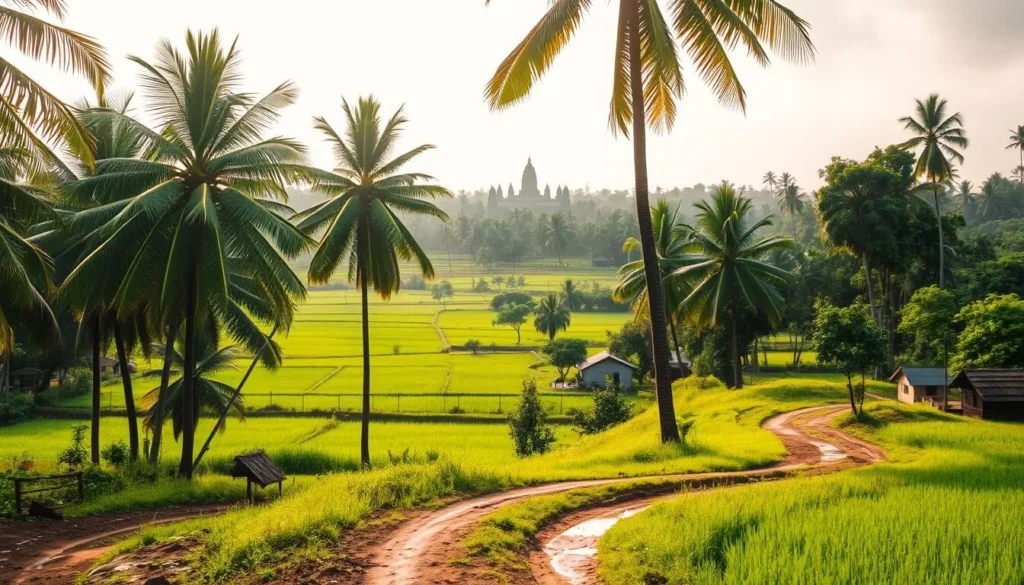
The Green Season Advantage
The wet season brings a lush, green landscape to Siem Reap, making it a beautiful time for nature lovers and photographers. The rain also means fewer tourists, making popular sites less crowded. You can take advantage of lower hotel rates and enjoy a more peaceful experience.
Navigating Monsoon Showers
To make the most of your time during the wet season, plan your activities around the rain. Visit temples in the morning, and explore indoor attractions during peak rainfall hours. Pack quick-dry clothing and a lightweight raincoat to stay comfortable.
| Time of Day | Activity Suggestions | Tips |
|---|---|---|
| Morning | Temple visits, outdoor explorations | Bring sunscreen, hat, and sunglasses |
| Afternoon | Indoor activities, relaxation | Use the time to grab food or coffee while waiting for showers to pass |
| Evening | Dinner, local entertainment | Enjoy the cooler evening time after a day of rain |
By being flexible with your plans and adapting to the wet season conditions, you can have a rewarding experience in Siem Reap. Many tour operators offer flexible scheduling, allowing for adjustments based on daily weather conditions.
Siem Reap, Cambodia: Best Months for a Weather-Savvy Trip
For a weather-savvy trip to Siem Reap, understanding the best times to visit is crucial. The city’s climate varies significantly throughout the year, impacting the quality of your visit.
Optimal Weather Windows: November to February
The period from November to February is considered the best time to visit Siem Reap. During these months, the weather is dry and cool, making it ideal for exploring the ancient temples of Angkor Wat. With average temperatures ranging from 20°C to 25°C (68°F to 77°F), you can enjoy comfortable days of sightseeing without the harsh sun or excessive rain.
Key advantages of visiting during this time include:
- Comfortable temperatures for outdoor activities
- Minimal rainfall, ensuring uninterrupted exploration
- Green landscapes following the wet season
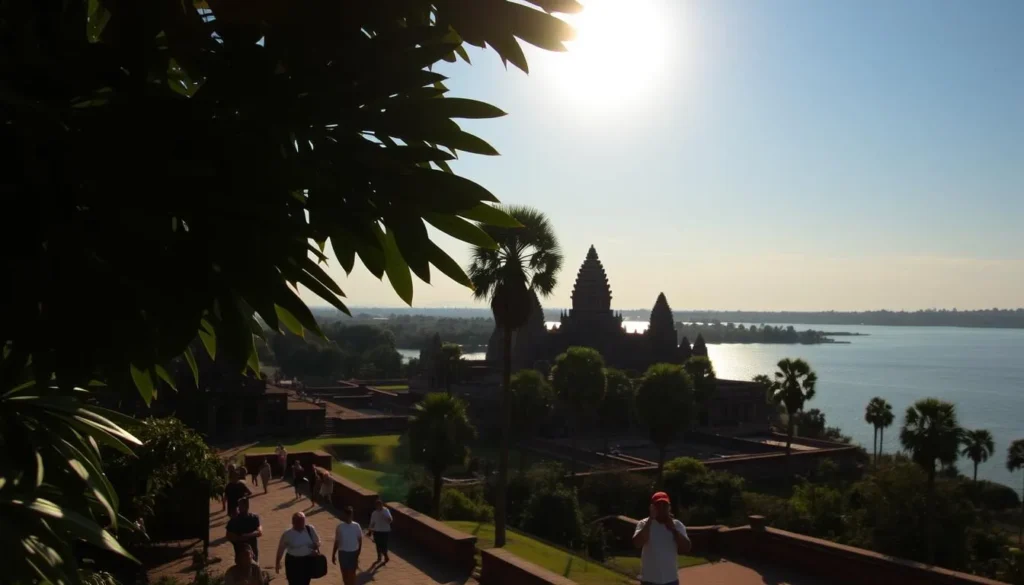
Shoulder Seasons: April-May and September-October
For travelers looking for a balance between good weather and smaller crowds, the shoulder seasons of April-May and September-October are ideal. These periods offer comfortable temperatures around 30°C (86°F) and lower humidity compared to the peak wet season months.
The shoulder seasons provide several benefits, including:
- Reduced crowds at major temples
- Lower prices for accommodations and tours
- Lush landscapes during September-October due to preceding rainfall
Visiting during these shoulder seasons can be a great strategy for those seeking value and comfort during their Siem Reap experience.
Exploring Angkor Wat in Different Seasons
As you plan your visit to Angkor Wat, understanding the seasonal changes can greatly enhance your experience. The temple complex, a marvel of Khmer architecture, offers a unique charm in every season.

Best Times for Temple Photography
Capturing the beauty of Angkor Wat through photography is a must. The best times for temple photography are during the early morning and late afternoon when the soft, golden light enhances the intricate carvings and bas-reliefs. Avoid harsh midday sun for the best results. The wet season, while less crowded, offers a lush backdrop that can add a unique dimension to your photos.
Avoiding Crowds at the Temple Complex
To avoid crowds at Angkor Wat, consider visiting during the shoulder seasons, April-May or October-November. These periods offer pleasant weather and fewer tour groups. Alternatively, explore the less popular temples within the complex during peak season. Visiting during the wet season (May-October) can also significantly reduce the number of people at the temple, allowing for a more contemplative experience.
| Season | Best Time to Visit | Tips |
|---|---|---|
| Dry Season | November to February | Expect large crowds; plan your tours accordingly. |
| Wet Season | May to October | Fewer crowds; lush green surroundings. |
| Shoulder Season | April-May or October-November | Pleasant weather; fewer tourists. |
Cultural Festivals and Seasonal Events
Siem Reap, Cambodia, is a city that comes alive with cultural festivals and seasonal events throughout the year. These events offer a unique glimpse into the local culture and traditions, making your visit even more memorable.
Khmer New Year: April Celebrations
The Khmer New Year, celebrated in April, is one of the most significant cultural events in Siem Reap. During this time, the city comes together to celebrate the traditional New Year with festivities that include traditional dances, water splashing, and religious ceremonies. You can participate in the fun by visiting local temples, joining in the water fights, or simply enjoying the lively atmosphere.
Year-Round Cultural Experiences
Beyond the Khmer New Year, Siem Reap hosts a variety of cultural events and festivals throughout the year. Some notable events include the Pchum Ben Festival in September or October, the Water Festival (Bon Om Touk) in November, and the Cambodia International Film Festival in December. These events, along with smaller Buddhist holy days and harvest celebrations, provide a rich cultural experience. You can enjoy cultural activities such as traditional performances, local food, and handicraft demonstrations, enhancing your experience in Siem Reap.
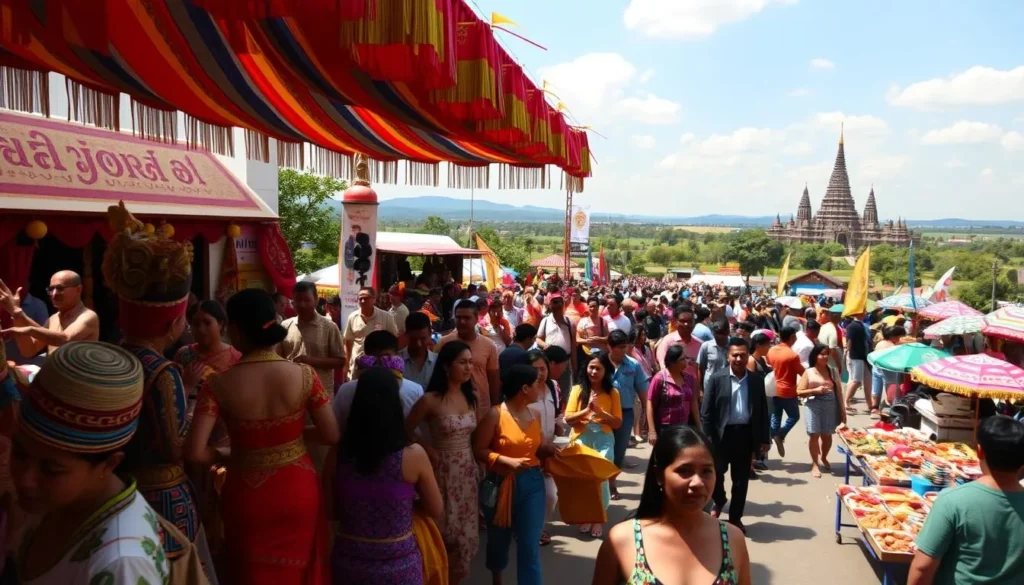
By understanding the cultural calendar of Siem Reap, you can plan your visit to coincide with these exciting events and festivals, making your trip even more enjoyable and memorable.
Practical Travel Tips for Each Season
As you prepare for your journey to Siem Reap, understanding the practical travel tips for each season can help you navigate the city’s climate with ease. Whether you’re exploring the ancient temples or enjoying the local culture, being prepared is key to a successful trip.
Accommodation and Transportation Considerations
When it comes to accommodation, consider booking hotels or guesthouses with air conditioning to combat the heat during the dry season. During the wet season, look for places with good drainage to avoid waterlogged areas. For transportation, tuk-tuks are a popular choice, but be sure to negotiate prices before you start your journey. If you’re traveling during the wet season, consider renting a car with a reliable driver to navigate potentially flooded roads.
Essential Packing List by Season
Your packing list should vary depending on the season. For the dry season, pack light, breathable clothing and don’t forget sun protection items like a wide-brimmed hat and high-SPF sunscreen. During the wet season, focus on quick-dry clothing and bring a lightweight rain jacket and waterproof shoes. A small, collapsible umbrella and waterproof phone case are also essential for navigating sudden showers. Staying hydrated is crucial, so remember to pack a refillable water bottle.
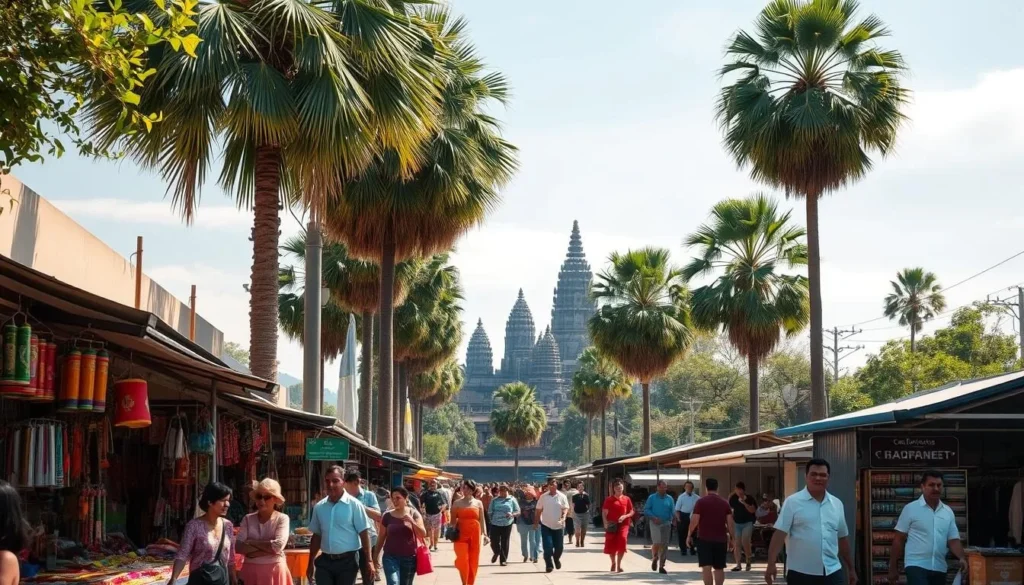
Conclusion
With its rich cultural heritage and historical landmarks, Siem Reap is a destination that benefits from weather-savvy planning. Understanding the local climate is key to a memorable experience. The dry season, from November to April, offers favorable weather for exploring iconic sites like Angkor Wat. While the wet season brings occasional rain, it also offers lush landscapes and fewer tourists. By planning your trip around these patterns, you can make the most of your time. Use the tips and guide provided to tailor your itinerary to your preferences, ensuring a smoother and more rewarding adventure in this historic area.
Armed with this knowledge, you can confidently plan your visit to Siem Reap, maximizing your experience regardless of the season. Whether you’re exploring ancient temples or vibrant cities, being prepared for the weather ensures a successful trip.
The above is subject to change.
Check back often to TRAVEL.COM for the latest travel tips and deals.
